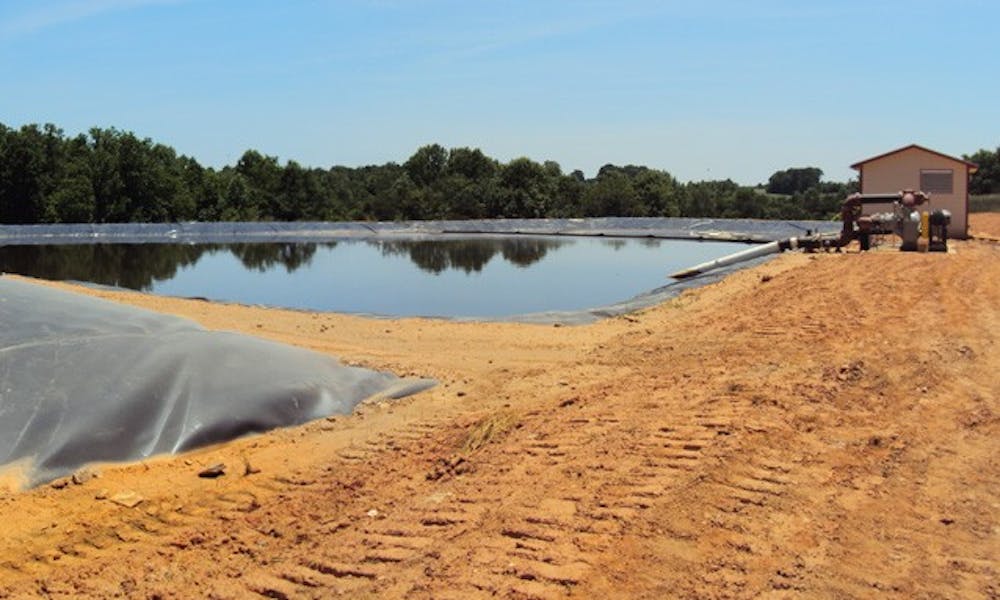Duke scientists are giving a new meaning to the term hogwash—and Google, Inc. wants in.
The University and Duke Energy have collaborated to create a technology that extracts methane from hog waste and creates electricity while reducing carbon emissions. The $1.2 million project was conceived three years ago by Duke and Duke Energy, though ground did not break on the project until Sept. 2010.
Google expressed interest in funding the project in return for a portion of the carbon offsets credits in June, said Tatjana Vujic, director of the University’s Carbon Offsets Initiative. Companies buy carbon credits to offset their emissions and limit their overall environmental footprint.
In the next 10 years, Duke and Duke Energy will continue running the project on Loyd Ray Farms in Yadkinville, N.C., and share operating and maintenance costs, Vujic said. Google will be splitting the University’s portion in exchange for a share of the carbon offsets for five years.
“In buying carbon offsets, we look for projects with the greatest possible impact,” Jolanka Nickerman, program manager of Google’s Carbon Offsets Team, wrote in an email Tuesday. “The potential impact of this project is large—it has the opportunity to scale to the thousands of farms in North Carolina and the U.S. and potentially the world. That would result in dramatic emission reductions.”
The exchange of funding for carbon credits is a proportional cost-sharing arrangement, Vujic said, noting that the technology will soon be demonstrated on a commercial scale. Of the carbon credits that the project produces, Google will receive the same percentage of funding that they contribute.
The carbon-recapture system is reduces emissions by about 5,000 metric tons per year and helps farms manage waste and promote on-farm renewable energy. The technology uses a two-million gallon anaerobic digester to isolate methane from the waste, converting it into electricity using a heated micro-turbine.
“This is not ivory tower policy but concrete evidence that this technology can work and pay off for farmers, the community and the climate,” Nickerman said.
Professor of engineering Marc Deshusses is in charge of the technical evaluation of the project and will be monitoring it during the next 10 years.
“Farmers will generate revenues from electricity savings and sales, the sales of Renewable Energy Certificates, carbon offsets, new cash crops replacing sprayfields and possibly improved animal health,” Deshusses wrote in an email Tuesday. “This is an important development and opportunity.”
The carbon offset credits the system produces are helping the University and Duke Energy reach their goal of carbon neutrality—one motivation for the project. The University hopes to be carbon-neutral by 2024.
Gus Simmons, director of engineering at Cavanaugh & Associates—an environmental engineering firm—was the principal designer of the project. Simmons said for every ton of methane converted to carbon dioxide there is a 21-fold reduction in greenhouse gas emissions—a benefit to the environment that also has a positive impact on the farm itself.
“Because we’re generating electricity, [the farmer] receives the energy that’s produced in excess of what the project consumes, resulting in cost savings,” Simmons said. “We want to make good economic sense as well as good environmental sense for the farmer.”
One of the best parts of the project was working with the 70-year-old farm owner, Simmons said, adding that the owner embraced the technology well beyond Simmons’ expectations.
“It’s really pretty forward-thinking of Duke University to be doing this,” said Vujic. “I’m really proud of Duke for its leadership, and we’re seeing some great results.”
Get The Chronicle straight to your inbox
Signup for our weekly newsletter. Cancel at any time.

